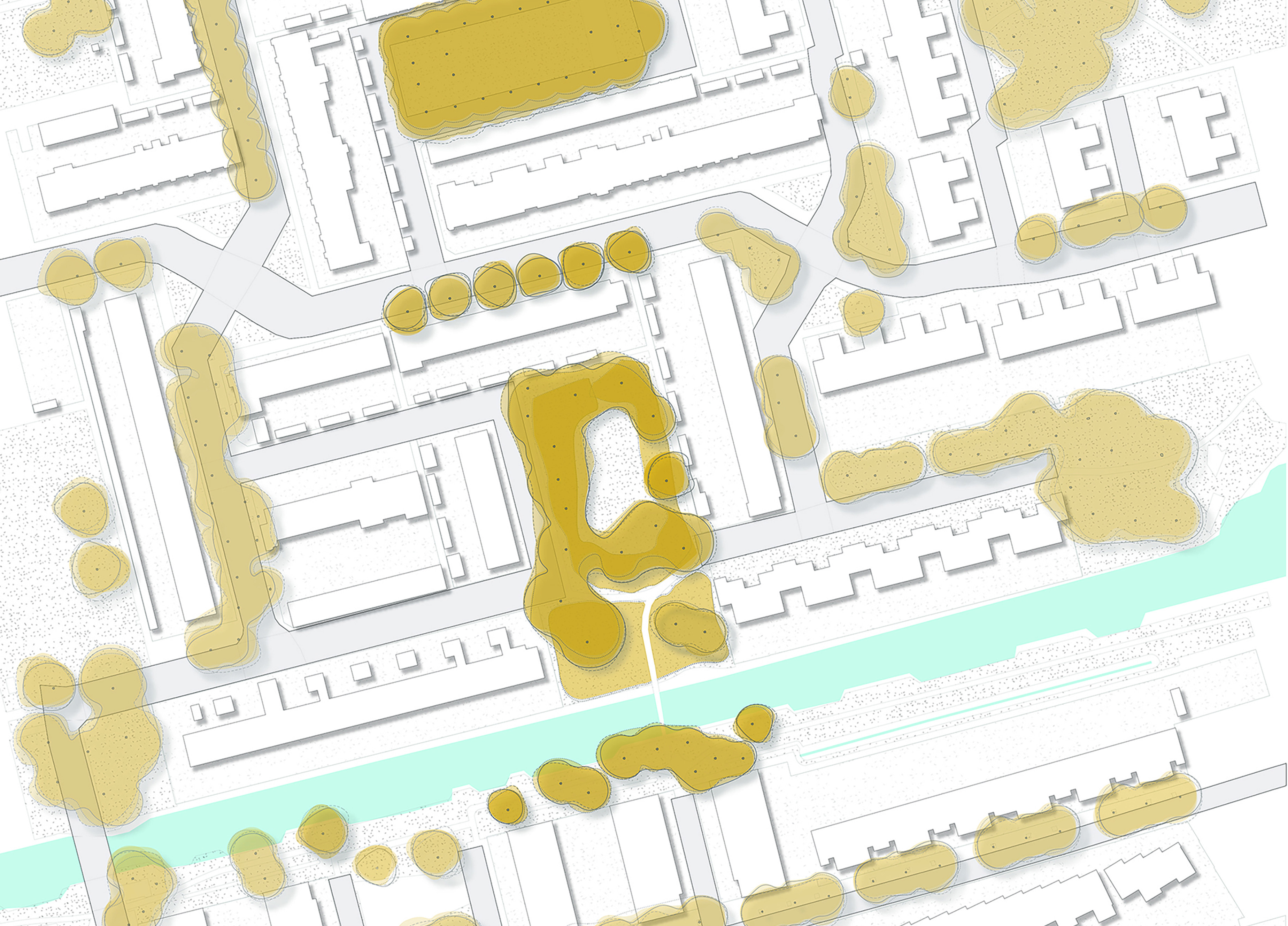Urban Forests Forest Urbanism & Global Warming
conference
The KU Leuven hosted the first international conference on Urban Forestry & Forest Urbanism. The necessity to develop urban forestry goes hand-in-hand with the continual need to transform urban building typologies – to reduce carbon emissions and respond to new ways of inhabiting cities. Planning/planting, designing, and managing resilient urban forests and forest urbanisms that contribute to global warming mitigation and adaptation requires interdisciplinary collaboration. What integrative and innovative approaches can be developed, for example, in collaboration between (urban) forestry, urbanism, (landscape) architecture, ecology, sociology and other fields?
how trees shape urban spaces
How can mapping be used to understand and communicate the spatial-experiential characteristics of the urban forest? Because the expansion of the urban forest will take place in and around existing cities, knowledge of the existing ‘tree language’ of these cities is indispensable: ordering, naming and showing essential characteristics of different tree structures. To unravel the urban tree language, this paper explores the ‘vocabulary’: the components of this language, using the city of Delft as a case study. Tree vocabulary refers to the spatial relationship between tree species, planting configurations and tree structures, and their specific location.
Field research, historical documentation and cartographic research resulted in a spatial typology for the urban forest from a landscape architectural-phenomenological point of view: trees create space, and their perceivable form (structure, proportions, texture) is relevant insofar as it determines the surrounding space in which people can move and act, which means that they are defined in relation to the human body. How trees define space can be understood from the characteristics of the trees itself, of the tree configurations, and of wooded areas, as three different 'legends’ to read the map of Delft as a wooded city from different angles. By mapping the city in this way, the inner city and the suburban recreational area can be read as not equal but equivalent components of the urban forest mosaic.
In this presentation the focus is on the typology of tree configurations: the shape of the surrounding, three-dimensional space, as determined by the relative disposition of the trees (and shrubs), and their crown relative to the trunk as the components of the shape. When several trees are planted together, the spatiality is determined by the joint configuration and no longer by the individual tree form (just as in a natural forest the individual tree form disappears in favor of the forest as a whole). The volume of the trees is complementary to, and determines, the surrounding space. An ensemble of different configurations in the post-war urban area Verzetstrijdersbuurt is used to showcase how the relations between different configurations defines the Delft urban forest.
This approach has two specific benefits: it highlights the connections as well as the site-specific qualities of the existing urban forest components. If these aspects are considered in management and expansion of the urban forest, they can be a tool for creating stronger relations between the different components, as well as diversity and heterogeneity in urban forests.
